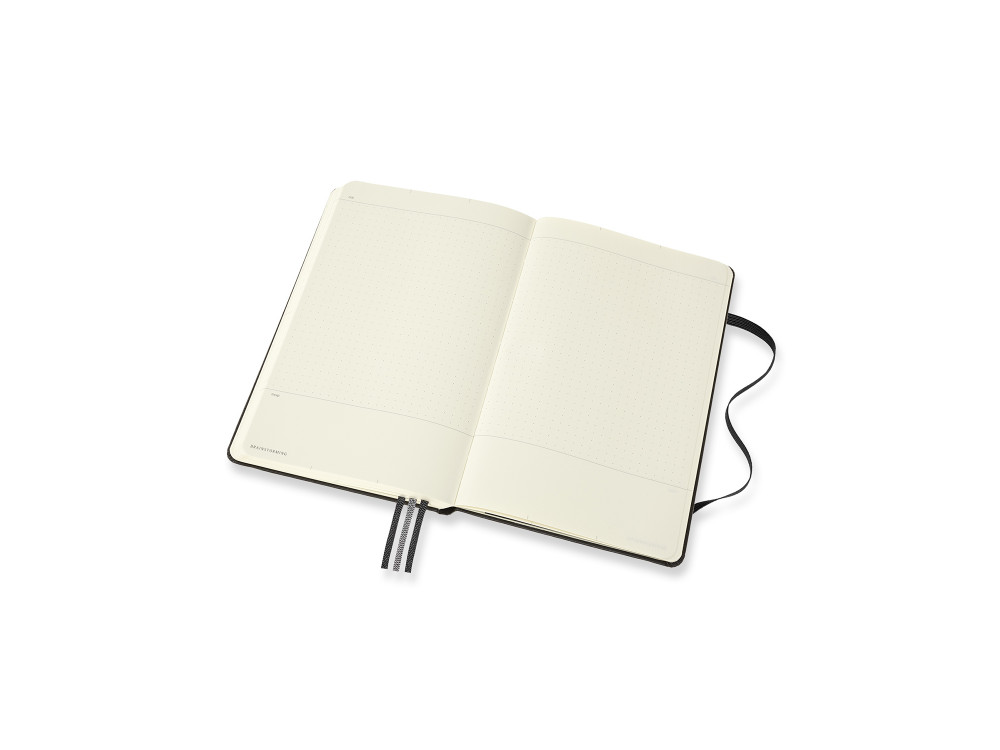
So, that’s my planner for this year! It’s working wonderfully so far. I really love these tabs because the paper is thick and durable and you can easily remove them, too. I tabbed out the months using Martha Stewart’s Avery NoteTabs, which are available at Staples. The notebook has a little pocket at the very back which is super nice, too! It’s perfect for business cards or stashing treasures.

I still have a pretty large section of the notebook open which I’ll use for journaling, creating lists, making notes and so on. The facing page is open for notes, brainstorming, etc… I began three rows down again, and each block is 12 cubes across by 12 cubes down.

#Moleskine project planner plus#
One page is devoted to planning out the month it has 6 blocks total – 1 block for each week, plus an extra block for stats or whatever else. I used the same template I had created for my hand-bound planner because that worked for me last year. The bottom of the weekly pages is open for whatever notes I may need to make – weekly goals, contact information, blog stats, etc… What I record there changes week to week, depending on what’s going on that week!Īfter I had completed pages for the entire year, I had quite a bit left of the notebook so I could easily make blog planning pages. I like to use this space as a bill tracker right now so I have the entire list of the month’s bills in one spot. I purposefully left large gaps in the weekly pages at the start or end of each month, depending on what day of the week it ended or began on, so I would have space to write out important dates, monthly goals or anything else. I used a small ruler and a black ballpoint pen to draw all the lines. The weekend is in column at the end, slightly smaller at 7 cubes across and 26 cubes down, but cut in half at the 13th cube. Each day of the week is a column – 9 cubes across x 26 cubes down. Again, I started three rows down from the top of the page for one long line across. This will total to 5 weeks and plenty of space for long months (there are a few long months this year!).Īfter completing a monthly page, I then began the weekly pages for that particular month. Each day of the month is a 7×7 square (7 cubes across, 7 cubes down). I also wanted blog planning pages, and plenty of space for lists, brainstorming, journaling and whatever else I may feel like scribbling.įor the monthly pages, I began three rows down from the top for the horizontal lines, and three rows up from the bottom to create a box. I wanted the twelve months in addition to weekly pages. I wish other colors would have been available but I have plans on embellishing the cover so it’s no big deal. I used a Moleskine Classic Large Squared notebook (hardback), in black. It was a little time intensive (probably about 9 hours total) but that’s still less time than what it takes me to handbind a notebook. This project cost me $19.00 – the price of the notebook plus tax.

I used Kyla’s tutorial as a guide in the transformation of my own Moleskine, but I personalized it to my tastes.


 0 kommentar(er)
0 kommentar(er)
